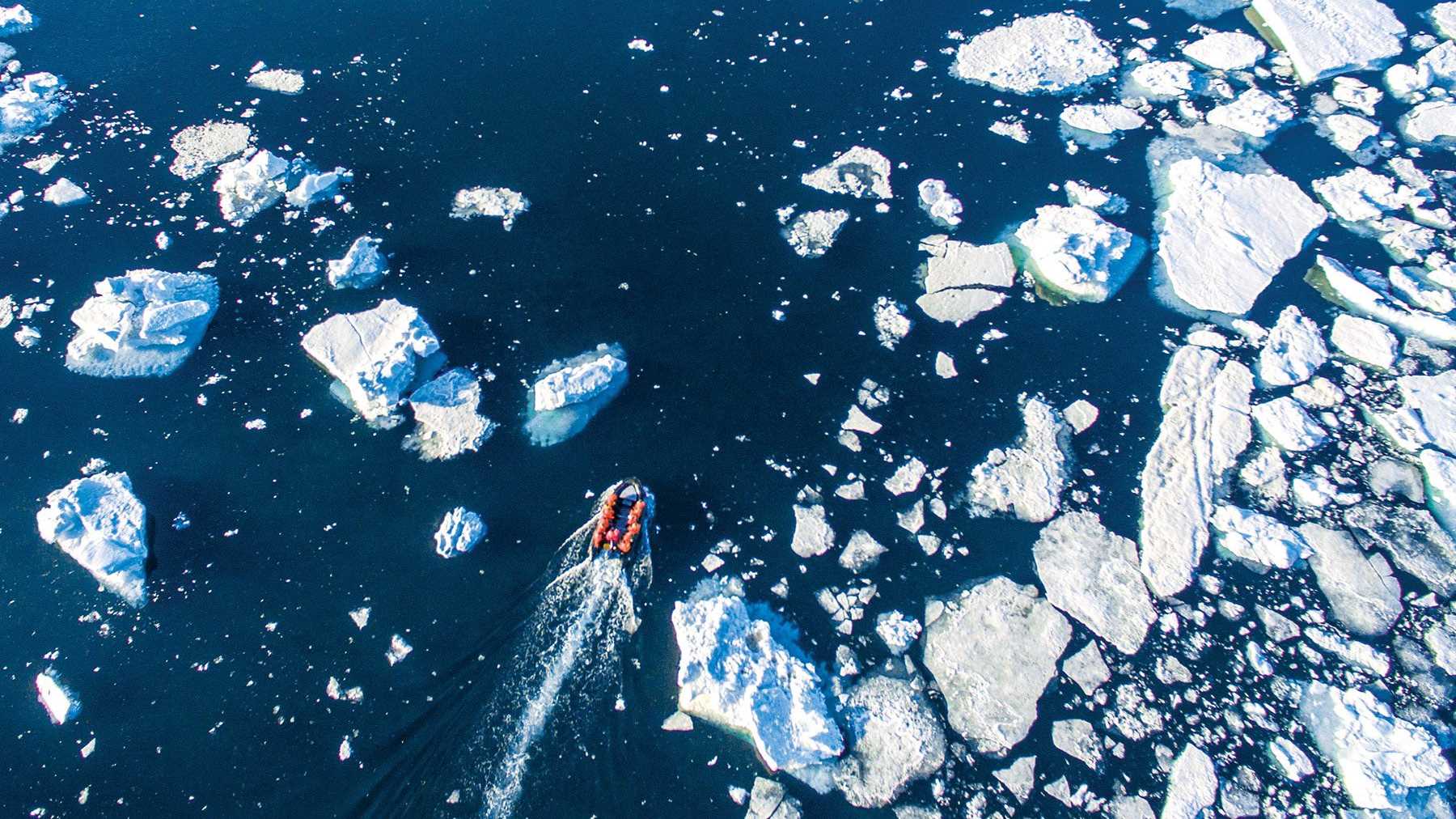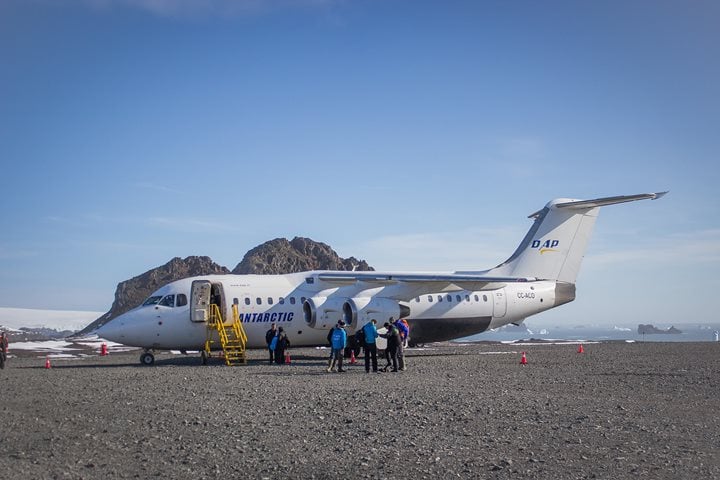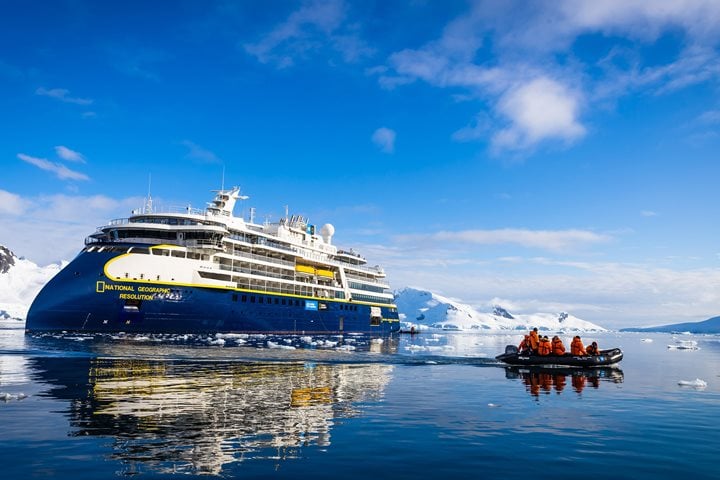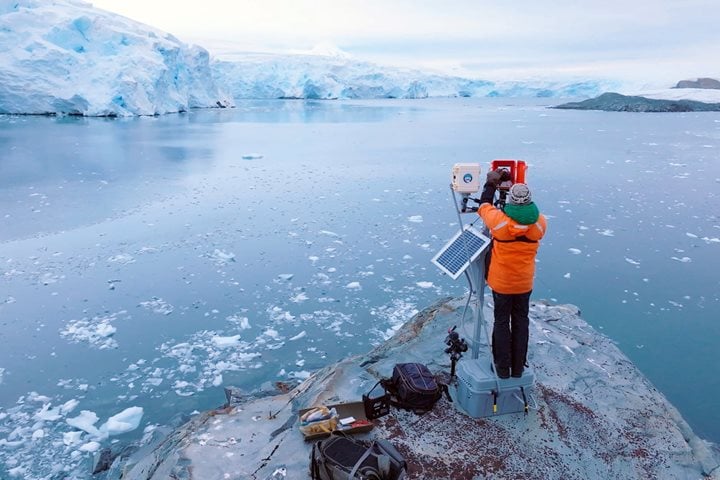Earth has a newly designated ocean as of June 8, World Oceans Day. National Geographic’s maps have until now marked the Atlantic, Pacific, Indian, and Arctic oceans; now the water around Antarctica is officially recognized as the Southern Ocean. Get Inspired by Photos, Videos, Webinars, Stories, and Exclusive Offers. Sign Up
To help understand this major announcement, we reached out to two Lindblad Expeditions-National Geographic undersea specialists who have vast experience studying and diving in the Southern Ocean.
EXPLORE ANTARCTICA & THE SOUTHERN OCEAN >
The World’s Newest Body of Water
“Within the scientific community the Southern Ocean has been recognized as its own ocean and its own ecosystem for many, many years,” says marine biologist and undersea specialist Shaylyn Potter.
“What’s really interesting about the Southern Ocean is that it’s defined not by continental boundaries but by a current boundary. The Antarctic Circumpolar Current—the ACC—is the largest current in the world and arguably the most important. It’s a really strong ocean current that surrounds the Antarctic continent fully, flowing clockwise unimpeded. It’s because of the ACC that the Southern Ocean has been able to evolve into its own ecosystem. Many species are unable to cross this physical barrier, allowing endemism to be high. This means that the majority of the benthic marine animals that we see while diving in the Southern Ocean aren’t found anywhere else in the world,” she explains.
When our ships reach the ACC, it’s the official entry point to The Ice.
“Located around 60 degrees south, the ACC is considered an actual physical border. As you cross it, the water temperature drops a few degrees and the air becomes foggy. There’s extensive upwelling and high productivity in that area, so you may get to see birds frenzy feeding," says Potter. "On a Lindblad-National Geographic expedition, we make a pretty big deal of crossing the ACC. We take temperature logs so we can note the drop, and then welcome everybody to Antarctica!"
What Makes the Southern Ocean So Special?
Close to 10,000 marine species live in the Southern Ocean, including thousands found nowhere else. Scientists estimate that up to 75 million crabeater seals and up to 500 million tons of krill live in Antarctica as well as many “fascinating, almost alien,” invertebrates, according to marine biologist and undersea specialist Alyssa Adler.
“People are often drawn more to charismatic animals like leopard seals and penguins, and while these animals are captivating, there are also many interesting physiological and ecological trends among the more discrete marine critters. I could talk for hours about each different little creature that lives down there,” she says.
“From the human perspective, it’s such a hostile environment. There’s very creative adaptation such as a taxa of fish that have evolved to carry a kind of antifreeze protein in their blood. This helps protect them from the literally freezing temperatures of the Southern Ocean,” Adler adds.
The Thrill of Polar Exploration
The amount of marine life as well as their vivid colors surprise most people who aren’t familiar with the Southern Ocean. “What I think is really interesting is when you’re looking at the Antarctic landscape from the surface, it’s pretty monochromatic. Everything’s white and black. But if you look under the water you see every color in the rainbow. It’s incredibly vibrant and that’s shocking to people! We’ll find sea stars, anemones, sponges…basically every invertebrate,” Potter says. “There’s so much color, so much activity, so much life. It blows my mind still,” Adler adds.
The exclusive nature of being able to dive in the Southern Ocean is not lost on Adler or Potter. “I’ve been able to dive places where people have really never been; to explore dive sites that humans have never seen, which is a crazy thing to say in the year 2021,” Adler says. “We experience a true sense of exploration. I’m consistently grateful that I get to know a place like that underwater.”
Potter adds: “There’s no dive shop to go to and very few documented sites, so we’re heavily relying on our own knowledge and training. We look at bathymetric charts, currents and tide tables, study ice flow, and monitor wind. We read the rocks and surrounding area and we have to make judgment calls about where we are going to dive. It’s still so undiscovered and uncharted that every time I dive I see something new that I haven’t seen before. It’s incredibly exciting!”
“It’s a challenge deciding where the dive sites are going to be—where the little cracks and crevices are that will have the most life and where we can go as divers to find raw shelves or skinny passes that we can get in that ice can’t,” Adler says.
Potter explains that Lindblad Expeditions-National Geographic does not actively seek seals, penguins, or other such animals underwater for their protection, for safety reasons, and so as not to harass them. However, sometimes an encounter is unavoidable.
“I very clearly remember the first time I saw a penguin underwater. I was at Port Lockroy diving in pretty shallow water, about 20 feet. I looked over and saw a gentoo penguin a few feet away swimming. It was so graceful,” Adler says.
She continues: “We don’t go down looking for any animal in particular; it’s whatever we find. Each site is a game of looking at the charts and the water conditions and seeing what might be the best dive site for that day in that place. We’re always trying to gauge where we’re going to see the most animals or the most interesting habitat.”
Why the Fifth Ocean Designation Matters
Because students will begin seeing the Southern Ocean on maps and will study it, the next generation’s knowledge can lead to conservation.
Adler and Potter are thrilled at the new official naming of the Southern Ocean. “It’s a spectacular part of the world and I’m really glad it’s getting the recognition it deserves,” says Adler. Potter notes, “With the designation hopefully will come more awareness and more protection of this really vulnerable ecosystem.”
Follow in the footsteps of history's most intrepid explorers when you join us aboard our expedition ships in Antarctica. Browse itineraries to the Southern Ocean.




